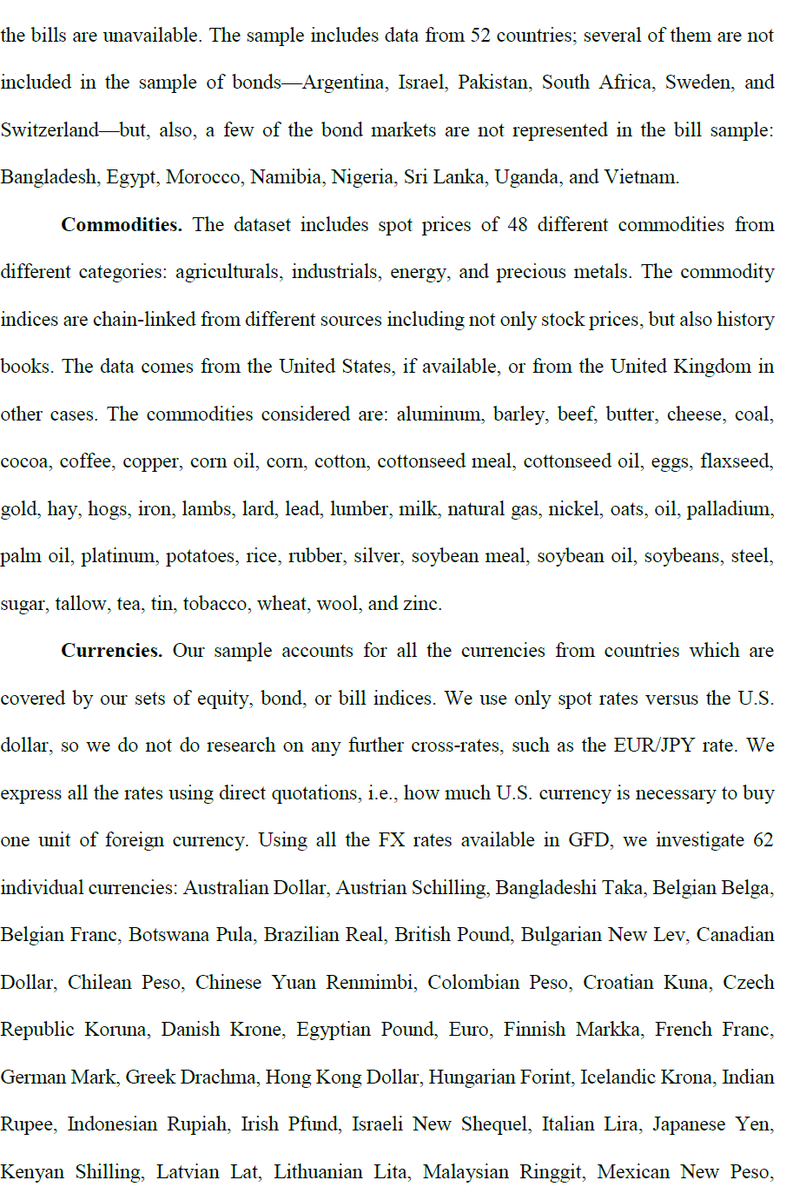
New SSRN papers, November 2020
(I haven't read these yet, but they have abstracts that look interesting.)
Interconnected Deviations from Covered Interest Parity
papers.ssrn.com/sol3/papers.cf…
October 2020 edition
(I haven't read these yet, but they have abstracts that look interesting.)
Interconnected Deviations from Covered Interest Parity
papers.ssrn.com/sol3/papers.cf…
October 2020 edition
https://twitter.com/ReformedTrader/status/1312081223687131137
Does Bid-Ask Spread Affect Trading in Exchange Operated Dark Pool? – Evidence From a Natural Experiment
papers.ssrn.com/sol3/papers.cf…
Managing Earnings to Appear Truthful: The Effect of Public Scrutiny on Exactly Meeting a Threshold
papers.ssrn.com/sol3/papers.cf…
papers.ssrn.com/sol3/papers.cf…
Managing Earnings to Appear Truthful: The Effect of Public Scrutiny on Exactly Meeting a Threshold
papers.ssrn.com/sol3/papers.cf…
Dividend Policy and the COVID-19 Crisis
papers.ssrn.com/sol3/papers.cf…
papers.ssrn.com/sol3/papers.cf…
Short-Selling Bans and Bank Stability
papers.ssrn.com/sol3/papers.cf…
Srisk: A Conditional Capital Shortfall Measure of Systemic Risk
papers.ssrn.com/sol3/papers.cf…
Two Big Distortions: Bank Incentives for Debt Financing
papers.ssrn.com/sol3/papers.cf…
papers.ssrn.com/sol3/papers.cf…
Srisk: A Conditional Capital Shortfall Measure of Systemic Risk
papers.ssrn.com/sol3/papers.cf…
Two Big Distortions: Bank Incentives for Debt Financing
papers.ssrn.com/sol3/papers.cf…
Mutual Fund Competition and Fund Manager Strategy Choice
papers.ssrn.com/sol3/papers.cf…
When is the Price of Dispersion Risk Positive
papers.ssrn.com/sol3/papers.cf…
Information Discreteness and the Lead-lag Returns Puzzle
papers.ssrn.com/sol3/papers.cf…
papers.ssrn.com/sol3/papers.cf…
When is the Price of Dispersion Risk Positive
papers.ssrn.com/sol3/papers.cf…
Information Discreteness and the Lead-lag Returns Puzzle
papers.ssrn.com/sol3/papers.cf…
Variance Risk Premium and Capital Structure
papers.ssrn.com/sol3/papers.cf…
Insurers as Asset Managers and Systemic Risk
papers.ssrn.com/sol3/papers.cf…
Catering to Investors Through Product Complexity
papers.ssrn.com/sol3/papers.cf…
Gap-Filling Government Debt Maturity Choice
papers.ssrn.com/sol3/papers.cf…
papers.ssrn.com/sol3/papers.cf…
Insurers as Asset Managers and Systemic Risk
papers.ssrn.com/sol3/papers.cf…
Catering to Investors Through Product Complexity
papers.ssrn.com/sol3/papers.cf…
Gap-Filling Government Debt Maturity Choice
papers.ssrn.com/sol3/papers.cf…
ETF Arbitrage Under Liquidity Mismatch
papers.ssrn.com/sol3/papers.cf…
Liquidity Transformation in Asset Management: Evidence from the Cash Holdings of Mutual Funds
papers.ssrn.com/sol3/papers.cf…
Macroeconomic Effects of Secondary Market Trading
papers.ssrn.com/sol3/papers.cf…
papers.ssrn.com/sol3/papers.cf…
Liquidity Transformation in Asset Management: Evidence from the Cash Holdings of Mutual Funds
papers.ssrn.com/sol3/papers.cf…
Macroeconomic Effects of Secondary Market Trading
papers.ssrn.com/sol3/papers.cf…
Credit Conditions, Macroprudential Policy and House Prices
papers.ssrn.com/sol3/papers.cf…
Banking Integration and House Price Comovement
papers.ssrn.com/sol3/papers.cf…
papers.ssrn.com/sol3/papers.cf…
Banking Integration and House Price Comovement
papers.ssrn.com/sol3/papers.cf…
Shedding Light on Dark Markets: First Insights from the New Eu-Wide OTC Derivatives Dataset
papers.ssrn.com/sol3/papers.cf…
Discriminatory Pricing of Over-the-Counter Derivatives
papers.ssrn.com/sol3/papers.cf…
papers.ssrn.com/sol3/papers.cf…
Discriminatory Pricing of Over-the-Counter Derivatives
papers.ssrn.com/sol3/papers.cf…
Dissecting Short-Sale Performance: Evidence from Large Position Disclosures
papers.ssrn.com/sol3/papers.cf…
papers.ssrn.com/sol3/papers.cf…
Do T-Stat Hurdles Need to Be Raised?
papers.ssrn.com/sol3/papers.cf…
Anomalies and False Rejections
papers.ssrn.com/sol3/papers.cf…
papers.ssrn.com/sol3/papers.cf…
Anomalies and False Rejections
papers.ssrn.com/sol3/papers.cf…
• • •
Missing some Tweet in this thread? You can try to
force a refresh


















